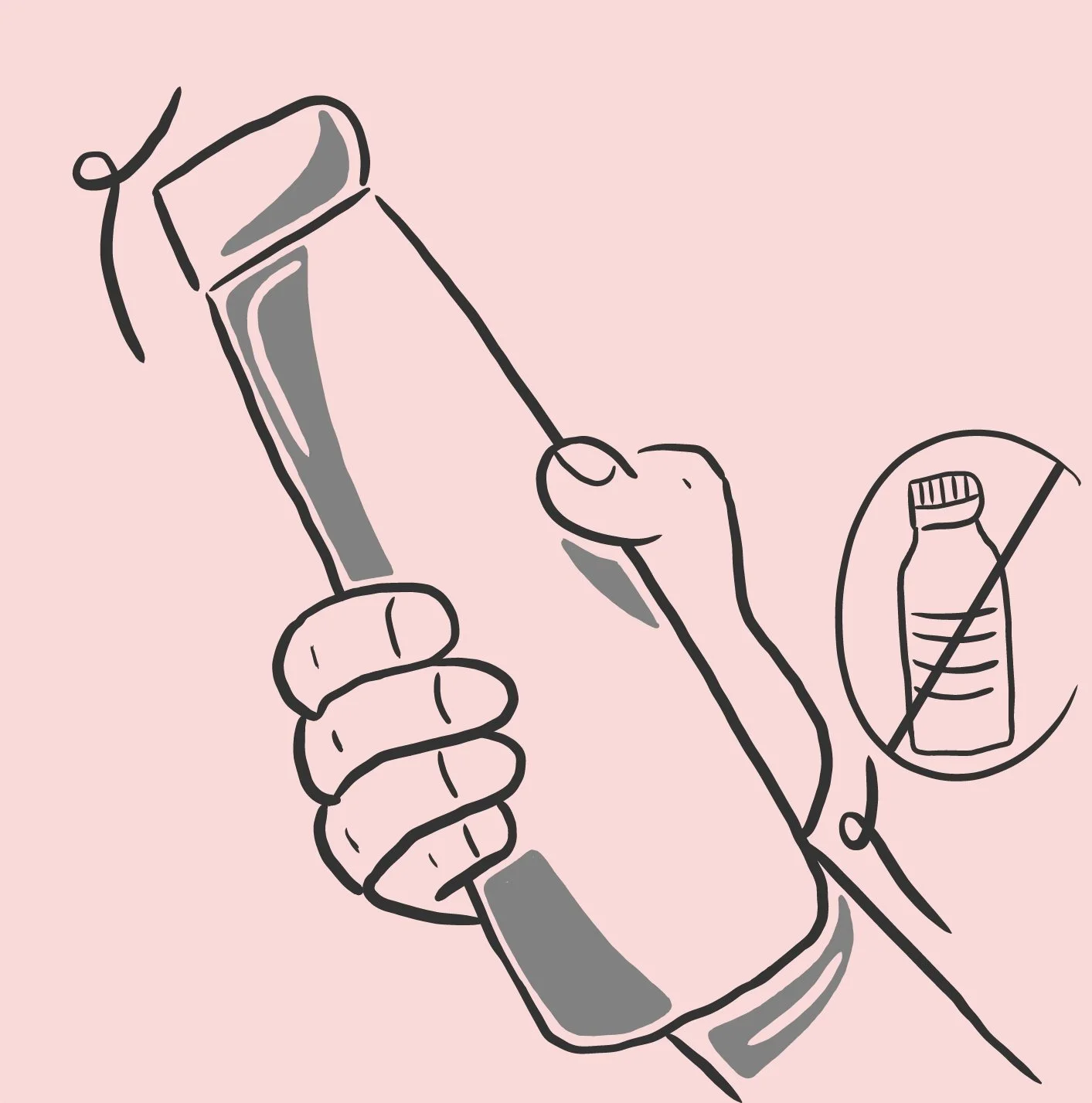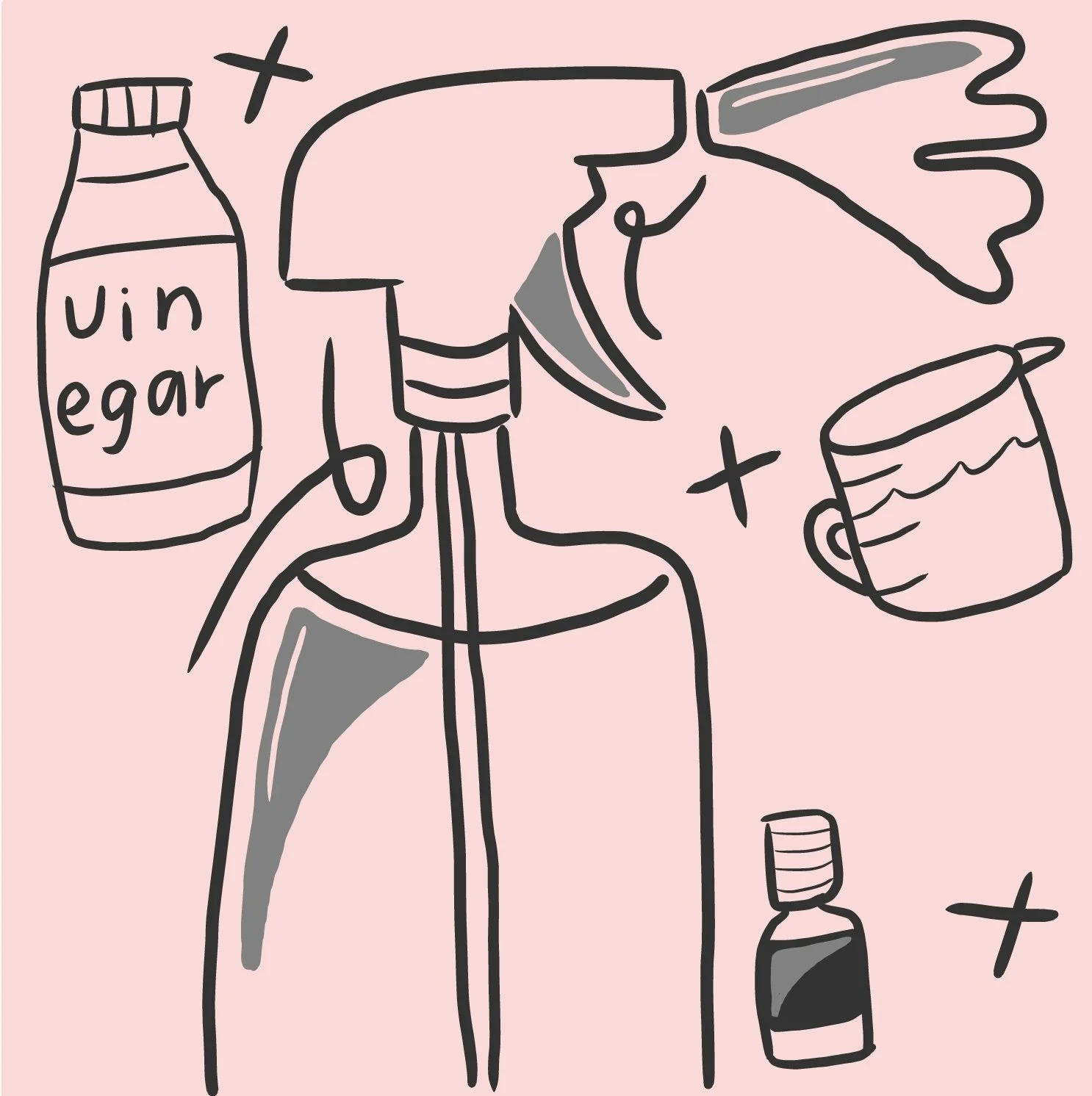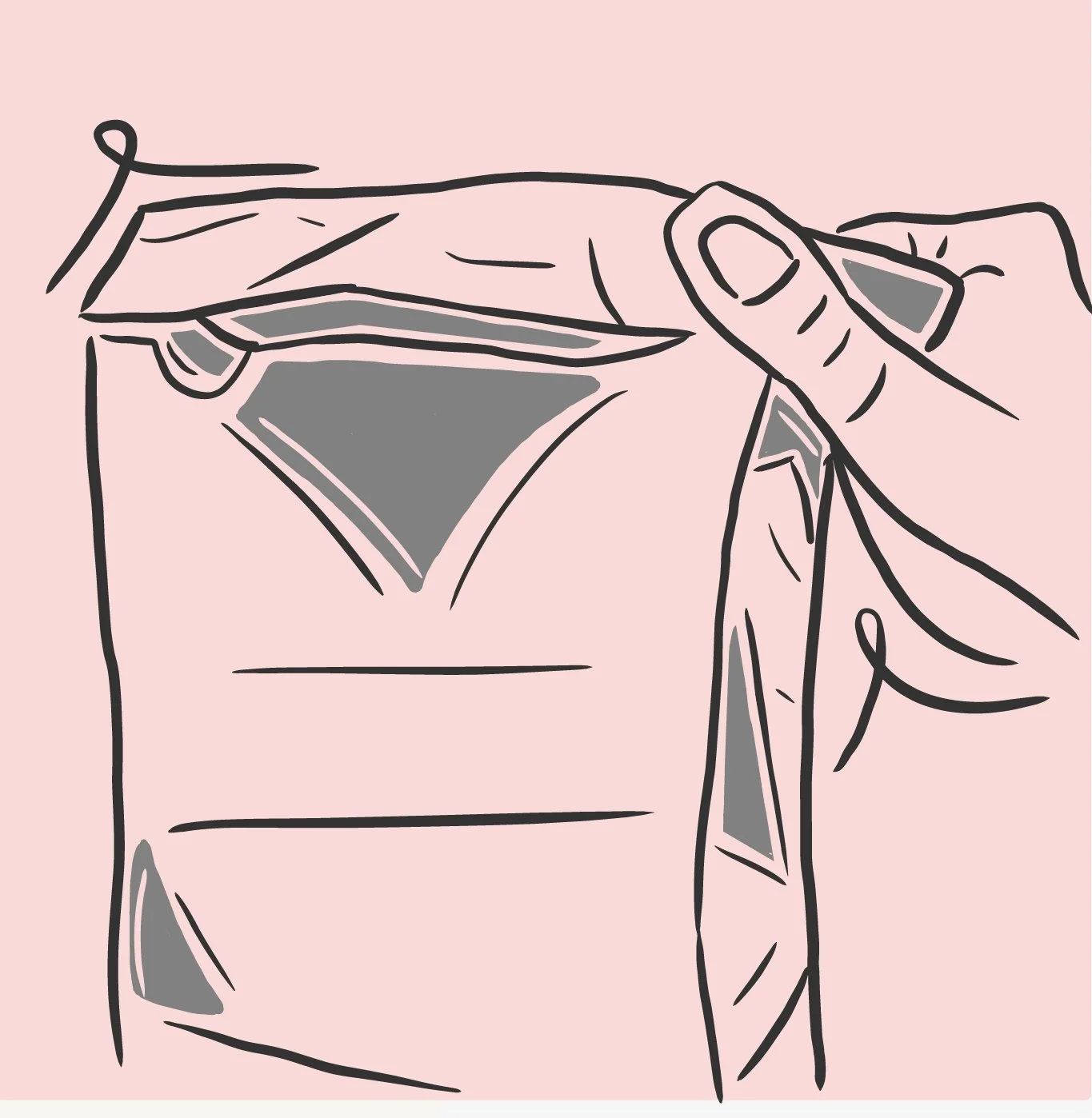24 sustainable habits for the new year!
Welcome to my blog <3 I hope my words can provide some new insights!
EP. 28 24 sustainable habits for the new year
2024 has arrived. For many of us, a new year often equates to a fresh start.
2023 was quite the year.
As shown by the various extreme weather events, climate change, and decreases in biodiversity, our environment has suffered tremendously this past year.
Let’s make an effort to gradually shift our lifestyle to a more sustainable direction this year. I understand that reversing the effects of human-induced climate change cannot possibly happen if only individuals are acting. Powerful corporations and governments need to implement new laws, treaties, and actions to ensure worldwide change. However, individually, we can also change our lifestyle to reduce the amount of waste and pollution we generate in our environment.
Allow me to guide you towards shifting our lifestyle with gentle habits that make a big impact in this blog post. 24 habits don’t seem like much, but they do make a large impact in changing our lifestyles and reducing the effects we have on our environment.
According to James Clear, the author of Atomic Habits, small habits, patience, and breaking down big changes into small steps are the most actionable ways to build a new habit. Thus, these 24 habits may seem small at first, but small is what pushes us to continue performing the habit. Over time, it will become an unconscious action, a routine, a part of our lives. This is the most actionable and “sustainable” way to shift our lifestyle together in 2024.
There are many different actions that we can take to ensure sustainability in our lives, but I have tried to keep the habits to actions that we can often perform in our lives instead of actions that we might do once and never do again, such as a closet clean out, or a big donation of all the items you don’t need in your home.
—
The Habits
Summary of the 24 habits:
Carry a water bottle when you go out
Bring a reusable bag when grocery shopping
Bring your utensils
Replace plastic toothbrushes with a bamboo toothbrush
Replace paper towels with a cloth towel
Replace lightbulbs with LED ones
Replace cleaning sprays with a simple homemade mixture
Have a meatless breakfast every day
Take 3-minute showers
Sort your trash
Compost
Turn off the lights when you go out
Make your own coffee
Print double-sided
Go to the farmer’s market
Bring your own lunch
Buy seasonally
Use a water filter
Switch laundry to cold water
Skip using straws
Before you grocery shop write down a grocery list
Before you purchase, ask yourself these questions
Before you wash your clothes, fill the washing machine
Before you drive, can you walk?
Carry a…
1, Water bottle when you go out
While it may seem like a haste to bring your water bottle whenever you are going out to a park, or to hang out with your friends in town, oftentimes, we can get thirsty easily. Without a water bottle nearby, buying a drink or getting a plastic water bottle may seem the most convenient. Statistics show that annually, every person in the US uses an average of 156 bottles. So why not carry a water bottle when you go out? This not only reduces trash and waste, but also cuts down your likelihood of grabbing a sweet drink, and is more financially efficient. A water bottle may last a few years, while you may need to buy plastic bottles every week.
To make this into a habit, we can associate a routine with this action. When getting your keys, or your wallet, remind yourself to also grab your water bottle. Setting your water bottle nearby your front door, or filling it up the night before can all help us remember this more easily, turning this into a habit!
https://www.earthday.org/fact-sheet-single-use-plastics/#:~:text=Americans%20purchase%20about%2050%20billion,of%20156%20plastic%20bottles%20annually.
2, Reusable bag when grocery shopping
When going shopping, even if it’s not grocery shopping, let’s try and bring a reusable bag with us.
There are many different bags that you could bring for different occasions. When going shopping, bringing a functional yet still aesthetic bag can make a well shopping companion, in case you have to buy stationary, small items, or home essentials. For clothes, often times it is easier to use the store bag. However, don’t throw it away. I often use these bags to give gifts, carry things to school, or use for other shopping times.
For grocery shopping, produce bags and tote bags can help contain the different foods you buy. To make this a habit, this year, when you go out, leave a few bags in your car; if you don’t have one, leave it somewhere right beside your front door. This can act as a visual cue to constantly remind you to grab the bag if you might need it.
3, Bring your utensils
This is an often mislooked thing, but often times these are the small changes that you make into a habit to gradually shift your lifestyle. Bringing your own utensils when going on a trip, for you school lunch, or when you’re on an airplane, all reduces the amount of single-use plastics you use. While disposable forks, spoons, and cutlery take up to 1,000 years to properly decompose, and we still use such a high amount of them, bringing our own utensils can not only save us a lot of time, but also the environment.
We can make this into a habit by naturally placing a set of utensils in our lunch bag after we finish cleaning them, or keeping a pair in your bag. As convenience is such an important part of our lives, having our utensils ready the day before can help us turn this into a habit.
https://nylcv.org/news/skip-the-stuff-a-simple-solution-to-the-single-use-plastics-epidemic/#:~:text=Disposable%20forks%2C%20spoons%2C%20and%20bowls,up%20in%20landfills%20or%20incinerators.
When you’re done, switch…
4, Plastic toothbrushes with a bamboo toothbrush
If you may not yet be done with your plastic toothbrush, don’t switch it out. That only causes more unneeded plastic waste contributing to the environment. Learning to be sustainable doesn’t mean completely turning your life upside down, instead, it is to make replacements when you need them, making these small changes.
Plastic toothbrushes are a form of plastic that remains in our planet for a long amount of time after we throw it away, often finding photos of toothbrush handles floating in the ocean. In my lifetime, I’ve probably used over 20 toothbrushes, and that is the amount of plastic still in our oceans and environment. A bamboo toothbrush can be an incredibly easy replacement, and is completely biodegradable. Brands such as Bambuu brush have a 100% biodegradable toothbrush, where you can cycle your bristles. Imagine the waste we get to save if we simply performed this easy swap.
5, Paper towels with a cloth towel
This swap should be a easy and quick one. Though paper towels may be compostable, how many of us actually have the time to compost them? Cloth towels are simply a more financially smart decision, and can also be reused throughout periods of a few months or more. We don’t need to produce more waste, and cloth towels can help us clean surfaces cheaper, more sustainable, and longer.
6, Lightbulbs with LED ones
Making the switch to LED light bulbs offers a significant amount of energy savings over other lightbulb alternatives. On average, LEDs consume 80% less energy when compared to incandescent light bulbs.
If you are a student, remind your parents, perhaps the next time they see a blinking lightbulb, if they haven’t already, to replace it with a LED one.
https://www.westinghouselighting.com/why-make-the-switch.aspx#:~:text=Making%20the%20switch%20to%20LED,compared%20to%20incandescent%20light%20bulbs.
7, Cleaning sprays with a simple homemade mixture
Often times we waste so much plastic material packaging on cleaning sprays that we otherwise do not need. Moreover, it is incredibly hard to recycle the packaging due to the high amount of chemicals still contained inside the plastic container after use.
According the UA agriculture research institute, homemade cleaners are a great alternative to store-brought cleaners. Here is the recipe:
1/4 cup of white vinegar
10-20 drops of essential oil
1 teaspoon of castile/dish soap/washing soda
2 cups of boiled/distilled water
A simpler version would be similar, but:
1/2 cup of white vinegar
1/4 cup of baking soda
1/2 gallon of hot water
Ingredients like vinegar and baking soda are natural cleaning agents, as they are on the opposite ends of the pH scale. Baking soda has an alkali base, making it good to clean dirt and grease. Moreover, vinegar is an explosive lifting agent. These two ingredients can both be easy and natural replacements to artificial cleaning sprays.
https://www.uaex.uada.edu/environment-nature/water/quality/clean-green-homemade-cleaners.aspx
Try to …
8, Have a meatless breakfast every day
For those with the privilege of meat and access to food, on average, one consumes about 100 kg of meat annually. For breakfast foods all across the country, from bacon to sandwiches or to porridge, it may often seem like a habit to consume a bit of meat in every meal.
However, the meat industry takes up a large amount of land, freshwater, and other resources, making it one of the most environmentally harmful parts of human impact. Livestock productions account for 18% of the total global greenhouse gas emissions.
You may wonder, how would one meatless, or even plant-based meal do for our environment? A lot. If you eat just one plant-based meal a day for a year, you'll save almost 200,000 gallons of water (equivalent to 11,400 showers) and the pollution equivalent to about 3,000 miles driven in your car (roughly LA to NYC). Try this for a week. There are an incredible amount of meatless breakfast options that one may resort to, such as oatmeal, toast, fruits, pancakes, or eggs if you don’t want to resort to vegan meals. The options are endless, and all it takes is one meal.
https://woods.stanford.edu/news/meats-environmental-impact#:~:text=Livestock%20production%20accounts%20for%2018,private%20agencies%20based%20at%20FAO
https://www.theworldcounts.com/challenges/consumption/foods-and-beverages/world-consumption-of-meat
https://www.bluezones.com/2018/12/benefits-of-eating-plant-based-for-just-one-meal-a-day/#:~:text=If%20you%20eat%20just%20one,(roughly%20LA%20to%20NYC).
9, Take 3-minute showers
The average shower lasts about 8 minutes. A typical shower head uses 2.5 gallons of water per minute (GPM). Thus, on average, we use 20 gallons of water per shower. A three minute shower, on the other hand, uses 7.5 gallons of water, saving 12.5 gallons of water in total, if you reduced your time by 5 minutes!
I think this small change can be pushed through making a shower playlist, or rather, a shower track. Finding a song that lasts around 3 minutes, putting it on everytime you take a shower, and ending the shower after the song ends is the most convenient and easy way to save water and time.
https://premierplumbingsc.com/understanding-your-shower-water-usage-during-a-3-minute-shower/#:~:text=The%20average%20flow%20rate%20for,family%20takes%20showers%20every%20day.
https://www.epa.gov/sites/default/files/2017-02/documents/ws-ourwater-shower-better-learning-resource_0.pdf
10, Sort your trash
Though this action may have been repeated so many times, and one may have heard people telling them to recycle and sort their trash since childhood, can we really remember to do so? This isn’t only remembering to recycle your trash inside your home, but also when you go outside. In school, in parks, in any public area, there are often several bins for recycling and and normal trash.
I think understanding what type of trash can be recycled and which cannot be recycled is the first step to sorting your trash. Many different websites can help you sort what is recyclable and what isn’t, such as this page, and downloading apps that can automatically scan your trash can also help us slowly remember how to sort. Understanding this makes it a much easier process to throw your trash or recycling when you are out and about, or when you are in your home. Having this information remembered helps sorting your trash become a habit, and you know exactly what to do when you have trash in hand. Most communities have specific days for recycling pick-up, and adding this notification to your calendar can help remind your family and yourself to take out the recycling, and make sure they get properly sorted.
11, Compost
Though composting may seem daunting at first, it has been proven to have many beneficial effects to the environment. Once you do enough research and preparation, composting can become an easy habit whether or not you compost at home or in your community.
According to the US EPA, composting can first of all, reduce the amount of methane emissions from landfills coming from the food waste. Oftentimes our food waste is mixed in with our normal trash, which all in the end inevitably get dumped into the landfill. However, why should we waste so much trash in the landfill when we can compost? Composting can also generate a lot of valuable soil by recycling the organic materials in your food. This can not only improve your soil health But also act as a natural fertilizer either for your community, or for your own plants and vegetables.
There are many different ways to compost. The most easy and efficient way is to search in your community or town to see if they have a composting program. By collecting your food waste in your home and then giving them out to the composting station, they can help recycle your organic waste. The second way is often for people with a backyard or with more time and energy. You can resort to making your own or buying an automatic composting bin online. All of these ways can help reduce your waste and start composting. At the beginning of this year, try to make an effort to compost, and soon it can become a habit that doesn't require much time or energy.
https://www.epa.gov/sustainable-management-food/composting#:~:text=and%20community%20composting.-,Benefits%20of%20Composting,materials%20and%20keeps%20them%20local.
12, Turn off the lights when you go out
Turning off your lights is quite simply the easiest and one of the most efficient ways to preserve energy and help the environment.
During the day, open your blinds and use natural light in your home or simply use one lamp if your environment is rather dark. During the night time, if you exit a room or house, make sure to turn off the lights as well. Electricity is in fact one of the biggest contributors to carbon emissions, and thus, the simple habit that we can do every time we exit our room everyday can immensely benefit the environment overtime.
https://www.cnet.com/home/kitchen-and-household/exactly-how-much-can-you-save-by-turning-off-the-lights-at-home/#:~:text=Electricity%20generation%20is%20one%20of,and%20therefore%20help%20the%20environment.
13, Make your own coffee
Though buying coffee from Starbucks or from your local cafe may seem to be the most efficient, or they might just have excellent coffee, why waste the time, money and energy to go out and buy coffee, throw away another coffee cup, when you can simply make your own coffee at home?
Personally, coffee gives me a lot of energy in the morning. However, as a student, I don't have the time to buy coffee from Starbucks in the morning. Thus, I mix my own coffee mix with hot water, then add cold water, to make my own iced coffee. It is such an incredibly easy and efficient way to save the amount of waste that is produced with plastic cups.
Moreover, making your own coffee can simply save a lot of money. While one cup of coffee may cost $4 or $5, one can of coffee mix may just be $10. Ths large can of coffee may last you up to one or two months, while a single cup can only last a day. Furthermore, getting into the habit of making your own coffee can also help you develop healthier lifestyles. Oftentimes we go to the cafe to buy coffee, but we're tempted by the smells and aurora of whipped cream or Frappuccinos. So think about it, when we buy coffee are we looking for an excuse to drink something sweet or actually to look for energy? If one wants to gain energy from coffee, I believe making your own coffee from home is the easiest, most sustainable, cost efficient and quickest way to do so. We can make this into a habit by first of all, buying a can of coffee mix. We can also try waking up a little bit later than we usually do when we grab coffee, forcing us to make coffee ourselves. This can thus enable us to save that one coffee cup and straw, and drink the healthy easy version from home.
14, Print double-sided
Double-sided printing is another easy way to help the environment. Ever since we were young, we might have been told to print double-sided, and that is because double-sided printing can save an immense amount of paper in the long run.
Double-sided printing reduces the amount of paper that you need to buy annually. Though this may seem like a hassle and you might not expect it, most libraries or even non-double-sided printing printers can in fact double-sided print. After printing your first paper we can just put the paper back into the slot and the printer will simply print on the other side. This only takes more than 5 minutes of your time, but can save a lot in the long run.
15, Go to the farmer’s market
As someone who used to be an avid Farmers Market goer, I highly recommend going to the farmers market once in awhile for your produce or for breakfast.
Not only does the farmers market usually have the most local foods that don't require a lot of emissions to be brought over, they can also be incredibly fresh and seasonal. Simply imagine being your own bag walking around the Farmers Market finding healthy vegan fresh options for your fridge. Once in awhile, take your time to just go to the Farmers Market when you might need some groceries, and see what you can find there. The Farmers Market also typically has a lot less wrapping and plastic containers then the produce inside a grocery store. Going to the farmers market is such a sustainable and fun way to spend your time and help the environment.
16, Bring your own lunch
Must I say anymore? Whether you are a student or somebody who works, bringing your own lunch is such an easy and sustainable way to help the environment. Think of the plates, bags, and plastic that comes with buying lunch from school or buying takeout, and multiply that by the amount of days that you might buy those lunches. I would say an average of at least 80 days. That is the amount of trash that can be replaced with a lunch or a container that you reuse every single day.
Furthermore, even though this is from a privileged stance of view, most of the time, lunches cost around 5 to 10 dollars. Simply using the ingredients that you have at home to make your own lunch can help save all that money. Lastly, I want to point out how healthy you can make your own lunches, having more choice and freedom in what you want to eat and gain energy from. What are you waiting for, go buy a lunch container and start prepping for lunch tomorrow!
17, Buy seasonally
This is another efficient way to help the environment that most of us neglect. Food production contributes to around a fifth of the total carbon emissions from most wealthy nations. Transporting the food itself takes up to 12% of the total food emissions. Buying local food that is seasonal in your local area can help save the amount of transportation that goes into your produce. Instead of trying to eat blueberries in the winter, save it for the summer when they actually grow in your area, instead of having them shipped from all across the world.
Furthermore, seasonal food is simply not as good most of the time. An orange in the fall may not taste good as an orange in the winter or in spring. We can resort either to this picture or websites and sources from online to find seasonal food and try eating seasonally! Through writing a list of all the produce that you might need or can buy that's in season before you go grocery shopping is a way to cultivate this habit and make it stick.
https://www.52climateactions.com/eat-local-seasonal-food/full
18, Use a water filter
600 billion water bottles are produced annually, resulting in average about 25 million tons of plastic waste. As mentioned earlier, there's so many ways that we can save this amount of plastic that goes into simply drinking water. Though buying a plastic water bottle may help, people often think that a bottled water is the most healthiest and safest option because they're filtered. However, through buying a water filter and helping filter out your tap water, you can stop using plastic water bottles and also stop contributing so much waste.
https://www.cnn.com/2023/03/16/world/plastic-water-bottles-un-report-climate/index.html#:~:text=The%20bottled%20water%20industry%20generated,and%20ends%20up%20in%20landfills.
19, Switch laundry to cold water
Water heating takes up to 90% of the total energy used to operate a washing machine. This action that one can take is not even a habit, but instead is a exercise of your awareness. Through changing your washing machine’s temperature settings, or even just from hot to warm can reduce one’s energy use by half. By washing four out of five loads of laundry in cold water, you could cut 864 pounds of CO2 emissions in a year, an amount equivalent to planting 0.37 acres of the U.S. forest!
https://www.energystar.gov/products/clothes_washers
http://coldwatersaves.org/
20, Skip using straws
What is the singular action that the whole world might think of when we ask, what is a way to be sustainable? Skip the straw.
If you are buying a drink (if it’s coffee, I’ve already told you, make it at home!), most shops have implemented cups that you can easily drink without a straw. Better yet, bring your own straw or cup, so. you skip the plastic cup too!
Before you…
21, Grocery shop write down a grocery list
Grocery shopping. The source of throwing away expired foods, and large amounts of food waste. Whenever I go grocery shopping and don’t have a clear idea of what I would like to get, I often end up getting large amounts of things that I might have already have at home, or seemed appealing only in the moment.
Making a grocery list, or simply a shopping list in other types of shopping days, can help make sure that you only get what you need, and what you will eat. You can download an app, write a phsycial one to exprience striking through each item you get. There are many different but extremely easy ways to make this into a habit, and sticking to it, you might even see a change in your health, as snacks often times come from impulsive shopping for good looking foods.
22, Purchase ask yourself these questions
I think reducing the amount of things you bring into your home in the first place, is the key way to reduce your overall waste. Asking yourself a few of these questions in every area of shopping: food, clothes, books, or miscellaneous items are all extremely beneficial.
Do have something at home that can replace this?
Will I use this in my daily life?
How often will I use this?
What makes this item special?
Why do I need this item?
These questions can all help you ponder and decided whether or not an object is essential to get. Not bringing new things into your home is the best way to reduce waste.
23, Wash your clothes, fill the washing machine
A study estimates that U.S. residential laundry emits 179 million metric tons of carbon dioxide every year. That’s the equivalent to the full energy usage and emissions of 21 million homes. How can we reduce the environmental impact that doing the laundry has on our environment? Stop the frequency of our laundry runs.
Through a small note or a mental reminder, get into the habit of only running the laundry when it is full. If you have an urgent piece of clothing that you need, run it with a bedding, or a towel, to make sure that the energy put in doesn’t go into waste. Or, even better, we can choose to hand wash it.
https://www.blueland.com/articles/what-is-the-environmental-impact-of-laundry
24, Drive, can you walk?
There are so many benefits of choosing to walk, ride a bike, or take public transport instead of driving or riding a car. These habit is simple. Ask yourself each time you need to run an errand or go somewhere, if it’s less than a [insert amount of time you have to spare - typically around 20 minutes] walk, can I walk there? This mindset every time you are about to head out can make walking into a habit. Over time, after a few times of walking to your destination, it gradually becomes easier to choose to walk instead of taking the car.
In our world, transportation takes up so much carbon emissions, and air and sound emissions. Every gallon of gasoline you save avoids 22 pounds of CO2 emissions, and every mile you walk burns an average of 100 calories. Avoiding just 10 miles of driving every week would eliminate about 500 pounds of carbon dioxide emissions a year!
https://hr.umich.edu/sites/default/files/green-facts-%202015.pdf
—
I’m watching you… and doing these habits with you!
Habits take time and discipline to cultivate, and I believe that every one of us has that. 2024 will be our year, and the environment’s year, if we all make an effort.
with love,
joy























